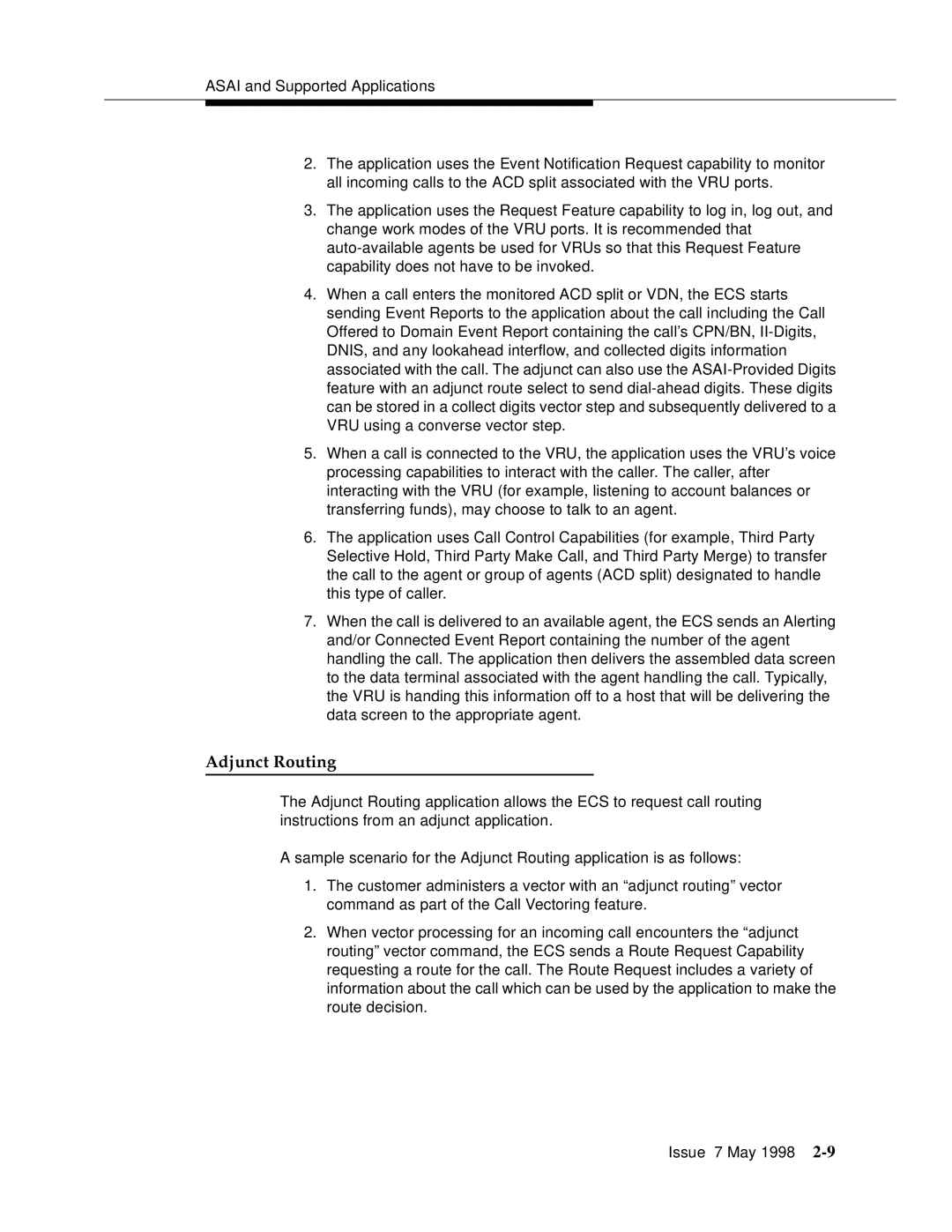
ASAI and Supported Applications
2.The application uses the Event Notification Request capability to monitor all incoming calls to the ACD split associated with the VRU ports.
3.The application uses the Request Feature capability to log in, log out, and change work modes of the VRU ports. It is recommended that
4.When a call enters the monitored ACD split or VDN, the ECS starts sending Event Reports to the application about the call including the Call Offered to Domain Event Report containing the call’s CPN/BN,
5.When a call is connected to the VRU, the application uses the VRU’s voice processing capabilities to interact with the caller. The caller, after interacting with the VRU (for example, listening to account balances or transferring funds), may choose to talk to an agent.
6.The application uses Call Control Capabilities (for example, Third Party Selective Hold, Third Party Make Call, and Third Party Merge) to transfer the call to the agent or group of agents (ACD split) designated to handle this type of caller.
7.When the call is delivered to an available agent, the ECS sends an Alerting and/or Connected Event Report containing the number of the agent handling the call. The application then delivers the assembled data screen to the data terminal associated with the agent handling the call. Typically, the VRU is handing this information off to a host that will be delivering the data screen to the appropriate agent.
Adjunct Routing
The Adjunct Routing application allows the ECS to request call routing instructions from an adjunct application.
A sample scenario for the Adjunct Routing application is as follows:
1.The customer administers a vector with an “adjunct routing” vector command as part of the Call Vectoring feature.
2.When vector processing for an incoming call encounters the “adjunct routing” vector command, the ECS sends a Route Request Capability requesting a route for the call. The Route Request includes a variety of information about the call which can be used by the application to make the route decision.
Issue 7 May 1998
